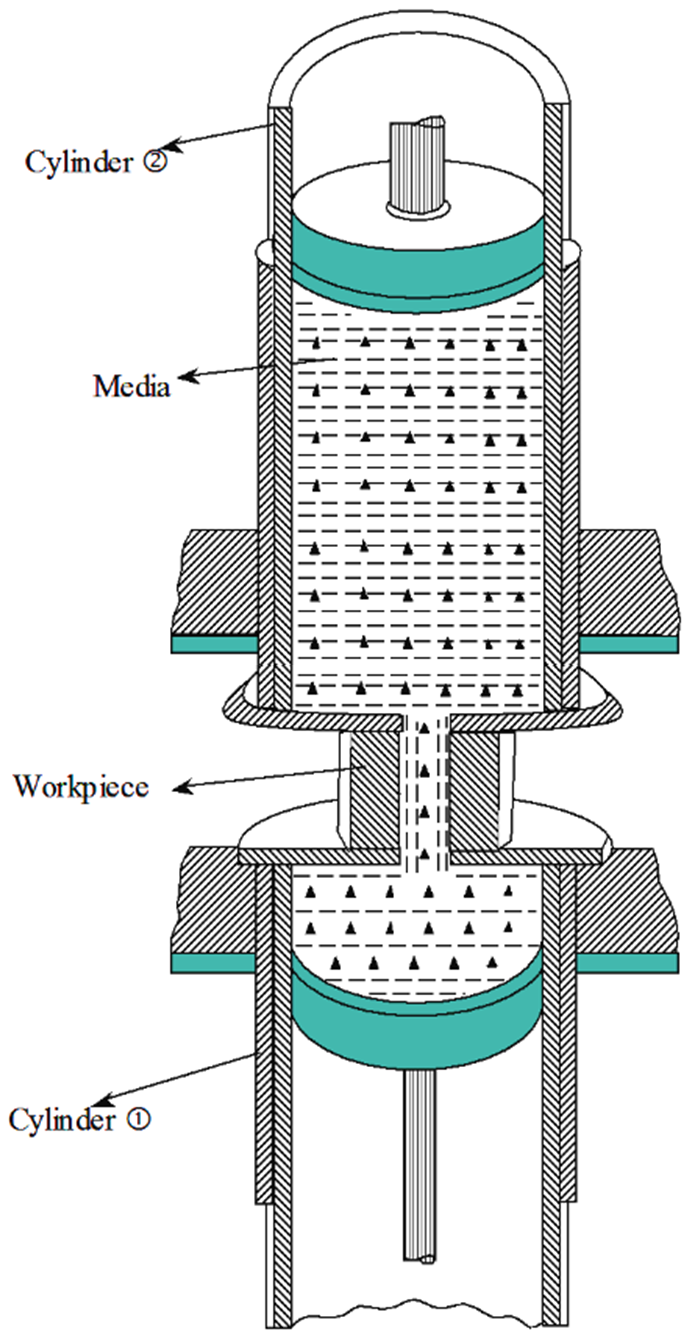Abrasive flow finishing is a process of finishing the surfaces by using a semisolid abrasive which flows over the surfaces in order to remove the small quantity of material. Abrasive flow finishing process is used to meet the following requirements such as.
- The constant demand for decreasing the lead time from design to production.
- The cost of finishing operation is necessary to be taken nearly as 15% of the total machining cost.

Figure 1: Abrasive Flow Finishing.
Working Principle of Abrasive Flow Finishing
Thus, a manual finishing operation is needed instead of automated finishing operation. The working principle of abrasive flow finishing process is shown in the figure 1. It comprises of two cylinders placed vertically in the opposite direction to each other, and partially filled with media. And workpiece is positioned in between the cylinders. The viscosity of media is so high that it can hold between the fingers. The media deforms like a ball made of rubber when certain amount of pressure applied. The abrasive media is forced through the passages formed by workpiece or tooling in the forward and backward direction. If the restriction offered by the passage way is more then large amount of force is required. In Abrasive Flow Finishing, the velocity of media is controlled by the cross-sectional area of passages. Abrasive flow finishing process is also known as multi-point cutting process since, abrasive particles are used as cutting tools.
Advantages of Abrasive Flow Finishing
- It is used for machining multiple components simultaneously to increase the productivity.
- The same machine can be used for wide range of jobs by varying tools and machining parameters, media and abrasive due to high flexibility.
- Abrasive flow finishing is applicable for both metals and non-metals.
- It provides the better accuracy, high efficiency, economy and consistency.
Limitations of Abrasive Flow Finishing
- The finishing rate is low when compared to other machining process.
- The abrasive particles tends to get embedded in the ductile materials.
- It is limited to closed environment.
- The tool wear is relatively high
Applications of Abrasive Flow Finishing
- Deburring of aircraft valve bodies.
- Radiusing of cooling turbine blades.
- Removing recast layer.
- Producing compressive residual stresses.